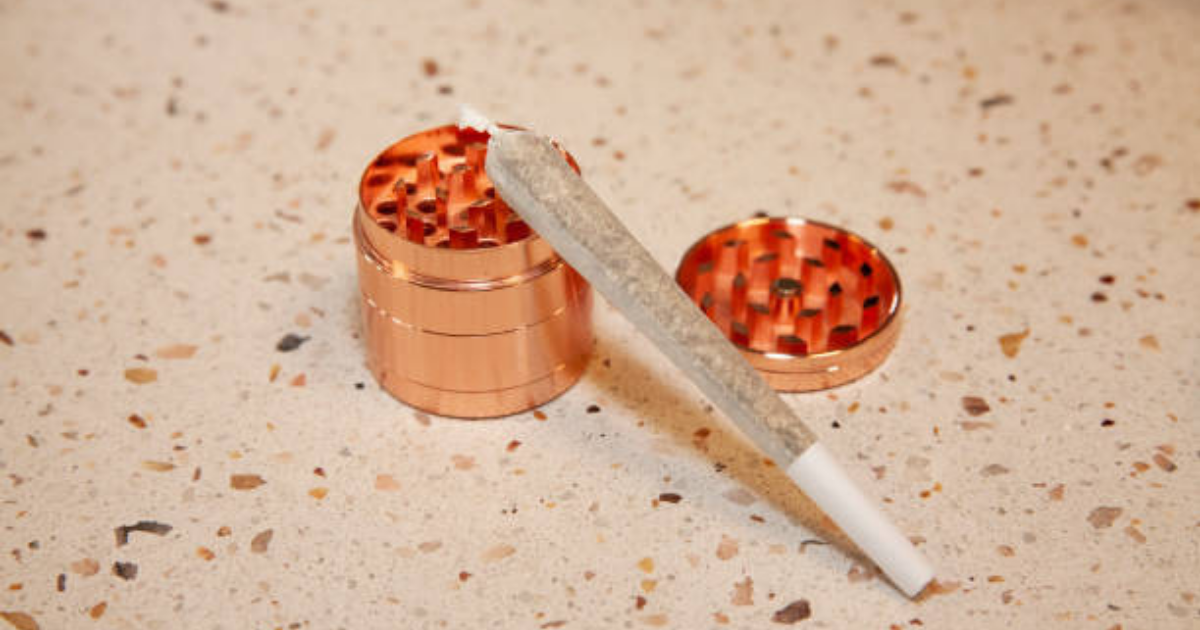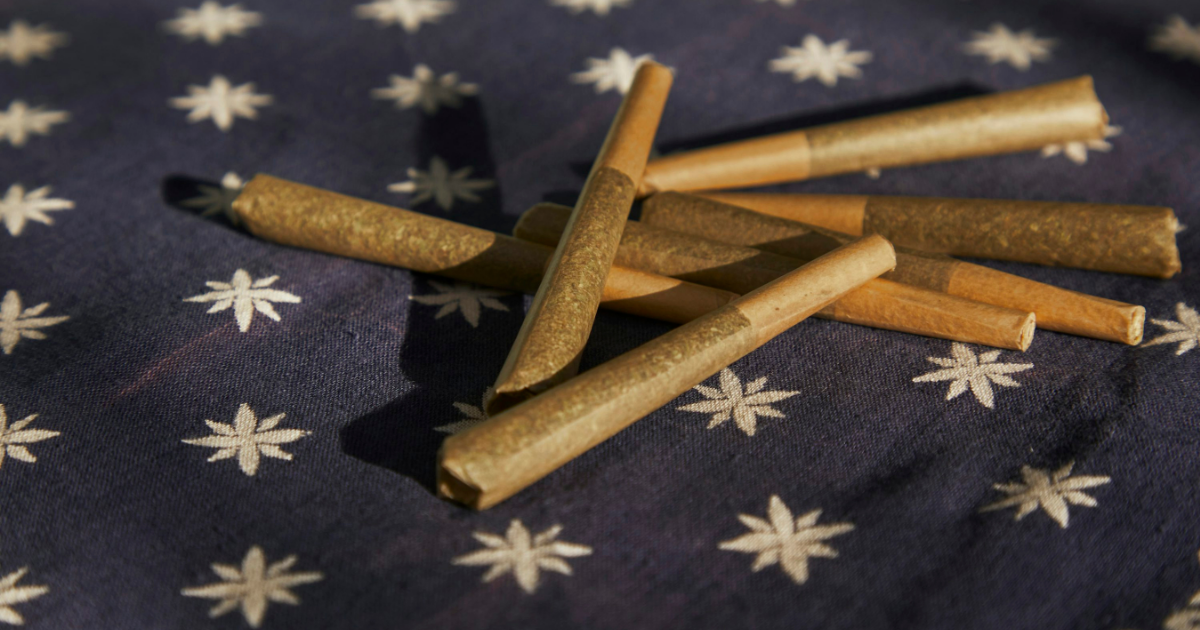When a pre-rolled cone looks solid but smokes like a clogged drain, odds are it’s overpacked. And yeah, it’s frustrating. A cone that doesn’t pull right, burns uneven, or won’t stay lit at all can ruin the vibe faster than a dead lighter. Whether it came off a machine or was packed by hand with a little too much enthusiasm, overpacked pre-rolled cones are a real thing but they don’t have to be the end of the session.
This guide breaks down how to spot an overpacked cone, why it happens, and exactly what to do about it without wasting the whole thing.
What Makes a Cone Overpacked?
Overpacked cones don’t always look like a problem at first. They hold their shape. They feel solid in the hand. But once you spark up, it’s a different story. The draw is tight. The cherry keeps going out. The burn feels like it’s fighting you the whole way through. That’s because too much pressure or the wrong grind chokes the airflow. What should have been a clean burn turns into a frustrating experience.
Overpacking pre-rolled cones usually hits the middle of the cone hardest. You might still see space at the tip and near the crutch, but airflow gets blocked in the core. That pressure zone stops the burn from moving smoothly. One side races ahead. The other barely lights. Whether it's hand-packed or machine-filled, the core issue stays the same. The material is crammed in too tight for air to move through properly.
Knowing what leads to overpacking helps you avoid it. And if it happens, knowing how it started gives you the best shot at saving the cone.
Packing Too Hard, Too Fast
Tamping isn't about force. A lot of cones get overpacked because someone used too much pressure too early. Pushing down hard might seem like it makes the cone stronger, but all it really does is compress the grind too tightly. Especially when packing in layers, too much pressure adds up fast.
The tighter the pack, the less airflow gets through. Heat builds up, the cherry struggles, and the cone turns into a chore. A proper tamp should shape the material without crushing it. When done right, the cone holds firm but pulls smooth. That’s the balance every good roll depends on.
Using the Wrong Grind Texture
The grind makes or breaks the flow. A powder-fine texture might seem smooth, but once packed, it turns into a solid plug. Even light tamping can turn fine grind into a dense mass that’s hard to light and even harder to keep burning.
What you want is a medium-fluffy grind. Something with structure, but not stiffness. It needs to hold form, but let air pass through easily. If your grind falls straight through a screen or feels like flour, it’s too fine. That kind of grind is better suited for other gear. For cones, the goal is simple. Structured, airy texture that burns clean.
Overfilling Without Testing Airflow
Just because it fits doesn’t mean it’s right. Overfilling is one of the most common ways people choke a cone without realizing it. You fill it to the top, twist it off, and it looks solid. But if you didn’t check the draw before sealing it, you won’t know there’s a problem until the flame hits.
A dry pull before twisting tells you everything. If there’s resistance before you light it, the burn’s going to be rough. If the draw feels blocked, you’ve packed too tight. Air needs a clear path. Overstuffing a cone kills that flow, especially if it settles unevenly near the center. Always test the pull before locking it in.
How to Know If a Pre-Roll is Overpacked
A firm cone doesn’t always mean it’s packed too tight. Some rolls are supposed to feel solid. But there’s a difference between sturdy and suffocating. If the airflow is restricted before you even light it, something’s off. And the faster you catch those signals, the easier it is to fix the cone before it ruins the whole session.
Recognizing an overpacked cone early lets you make small adjustments instead of scrapping the roll. These signs don’t mean the cone is unsalvageable, but they do mean you’re working against airflow. Knowing what to look for is the first step toward bringing it back to a smooth, even burn.
Tight Draw with No Fire
The first and most obvious sign is a tight draw before the flame touches the rolling paper. If you put the cone to your lips and it feels like pulling through a plugged straw, that’s a red flag. Air should move through with a little resistance, not a full block.
This dry draw test is easy to overlook, especially when the cone looks good on the outside. But just because the shape is clean doesn’t mean the airflow is. Always test the pull before lighting. If it feels off, it probably is.
The Cherry Dies After Lighting
Lighting up only to watch the cherry go out after a couple of weak pulls is another sign. This usually means the airflow is restricted and the heat can’t spread through the packed material. The burn starts but has no fuel to keep it going.
Relighting over and over gets frustrating fast. And each time the cherry dies, the flavor and structure take a hit. If a cone refuses to stay lit without constant babysitting, chances are it's packed too tight through the center or near the tip.
Uneven Burn with One Side Catching Faster
When a cone burns unevenly, especially with one side racing while the other stays raw, airflow is usually the issue. An overpacked zone is blocking heat from spreading evenly. One side burns clean. The other side struggles to keep up.
This kind of lopsided combustion doesn’t always show up right away. But once you see a slanted burn line forming, it’s time to act. Fixing it early, whether by rotating the cone, adjusting your draw, or poking through, can rebalance the burn before the whole thing goes south.
The Draw Test Before You Spark
Lighting a cone without checking the airflow first is asking for problems. The draw test is simple, fast, and one of the most underrated habits in rolling. Before you spark anything, take a dry pull. You’ll know right away if the airflow is where it should be. No tools needed. No flame required. Just your breath and five seconds of attention.
This isn’t just a routine check. It’s a way to read how your cone is going to perform before wasting product. A cone that draws clean will burn clean. One that pulls tight or feels blocked is already telling you it’s overpacked or uneven inside. This is your shot to fix it early and keep the session smooth.
What a Proper Draw Should Feel Like
A good pre-roll should offer slight resistance when you take a dry pull. Not wide open. Not choked. Just enough pressure that you feel air moving through the cone without needing to strain. Think of it like sipping through a straw with water in it, not a milkshake.
If the airflow feels natural, that usually means the grind is right, the pack is balanced, and there’s no internal blockage. That’s the green light to go ahead and light up. No guessing. No hoping for the best. Just confirmation that your prep was on point.
What Tight Draws Tell You Instantly
If the dry pull feels like you're trying to suck a thick shake through a coffee stirrer, stop. That’s a locked cone. Airflow is being blocked somewhere in the pack. Most times, it means too much pressure was applied during tamping or the grind is too fine and settled too densely.
A tight draw is your first and best warning sign. The cone might look clean on the outside, but internally it’s choked out. Catching that before fire hits the tip gives you the chance to make small fixes, instead of dealing with sideburns, dead cherries, or full relights mid-session.
Small Adjustments That Can Save the Session
Once you catch a tight draw, don’t toss the cone. Start with simple moves. A soft tap against a hard surface might help shift the material inside. Or take a thin tool and poke gently through the top to break up the core without wrecking the structure.
If the crutch side feels blocked, remove it carefully and loosen the grind near the base. These minor tweaks can restore airflow without forcing a full repack. The draw test doesn’t just catch issues, it gives you the chance to fix them before they become problems. One habit, a few seconds, better burn every time.
How to Deal with Overpacked Pre-Rolled Cones
Overpacked cones can kill the vibe fast, but that doesn’t mean they’re trash. The key is knowing how to read the situation and make the right adjustment before the whole thing falls apart. Sometimes all it takes is a light tap or a gentle poke. Other times, you’ll need to unroll and rework the whole cone. Either way, the fix is almost always worth it.
The idea isn’t to force the cone to burn. It’s to reset the airflow without destroying the structure or losing the grind. Whether you’re rolling at home or working with pre-packed product, these fixes keep the session alive and the material burning the way it should.
Loosen the Tip
The fastest way to loosen an overpacked cone is to gently work the tip. Twist it slightly and tap it against a surface to shift some of the contents downward. Don’t bang it. Just enough movement to release pressure.
Use a toothpick or a thin tool to poke through the center from the tip side, gently breaking up the pack. This improves airflow without dumping out the contents or destroying the structure.
Back Out Material From the Crutch End
If the tip adjustment doesn’t cut it, try going in from the crutch side. Carefully twist the crutch and remove it. Use a slim tool to loosen a bit of the material, then slide the crutch back in. This opens up space right where the draw starts and often solves most tight pull issues.
Be slow and steady here. Rushing it might tear the paper or collapse the base. But done right, it can rescue even the tightest packed cones.
Roll and Re-Pack
When the cone is just too far gone, and airflow still feels blocked after poking or backing out material, it’s time to open it up. Unroll the paper, save the grind, and re-pack it properly with layered tamping.
This isn’t always ideal, especially when on the move, but it’s better than wasting the contents. Rolling fresh with better airflow gives a clean second shot instead of fighting a losing battle.
Use the Right Tools
A lot of overpacked pre-rolled cones happen because of poor packing tools. Random pens, fingers, or whatever’s around tend to pack too aggressively. Using proper tamping sticks, vibration trays, or adjustable fillers reduces the risk.
Better tools lead to more consistent results. It’s easier to avoid overpacking than it is to fix it after the fact.
Don’t Over-Tamp in Layers
When filling cones by hand or machine, packing in layers is smart, but overdoing it on each layer leads to compaction. Tamping with too much pressure, especially early on, builds a dense core that air can’t push through.
The goal is to press gently, evenly, and consistently. Think form, not force. A cone that holds shape without choking airflow is what wins.
Avoid Fine Powder Grinds
Super fine grinds feel smooth going in but turn into a solid brick once tamped. They’re one of the main causes behind overpacked pre-rolled cones. The finer the grind, the more tightly it settles, especially with even a little pressure.
Medium-fluffy texture is the sweet spot. Enough structure to hold air pockets, not so much that it turns the cone into a tunnel of dust. Always check the grind before loading up.
Machine Settings Matter
For automated packing, machine settings make a huge difference. If the vibration or tamping setting is too strong, the fill gets compacted beyond what burns smoothly.
Test smaller batches. Adjust fill cycles or tamping force until the cone burns clean but stays firm. Overpacked pre-rolled cones coming from machines usually means it’s time to recalibrate the settings.
Store Cones Properly Post-Pack
Packing a cone right is one thing. Keeping it that way matters too. Storing pre-rolls under pressure, inside soft containers, or near heat compresses them over time.
Always store cones in rigid, airtight containers in a cool spot. This maintains structure, keeps the grind stable, and helps avoid compression that turns a perfect cone into a choking one.
A Session Doesn’t Have to Be Ruined
Even if a cone comes out overpacked, there are options. From simple pokes to full repacks, the right move can save the session. Knowing how to handle overpacked pre-rolled cones turns a frustration into just a minor delay.
The more the airflow stays steady, the better the burn, the smoother the pull, and the longer the session lasts without any stress. That’s the goal every time.
FAQs
What causes overpacked pre-rolled cones?
Overpacking happens due to excessive tamping, ultra-fine grind, or machine settings that compress the contents too tightly. It restricts airflow and causes poor burn quality.
How can you tell if a cone is overpacked before lighting?
Do a dry pull. If the airflow feels tight or there's resistance while drawing air, it's likely overpacked. Visual cues include overly firm structure and uneven density.
Can overpacked pre-rolls be fixed without unrolling them?
Yes. Lightly tapping the cone, loosening material with a thin tool, or removing a bit from the crutch side often helps restore airflow without unrolling.
Is it better to re-roll than fix an overpacked cone?
If all adjustments fail, yes. Re-rolling gives more control and ensures even airflow, especially if the original cone is badly compacted or damaged.
How can overpacking be avoided during production?
Use medium-consistency grinds, layer tamping lightly, avoid excess pressure, and check machine settings regularly. Testing batches for airflow helps catch overpacking before mass rollout.





LEAVE A COMMENT
All comments are moderated before being published.
This site is protected by hCaptcha and the hCaptcha Privacy Policy and Terms of Service apply.